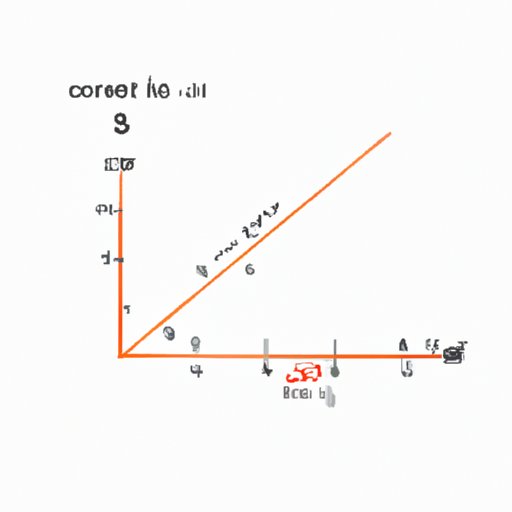Introduction
Cosine is a fundamental trigonometric function that describes the relationship between angles and sides of a right triangle. It is one of the three primary functions, along with sine and tangent, that make up the basis of trigonometry. Understanding cosine and its applications is essential for solving problems in mathematics, engineering, and science. In this article, we will provide a beginner’s guide to understanding cosine, its significance, and how it is related to trigonometry.
Introducing Cosine: A Beginner’s Guide to Understanding Trigonometry
Trigonometry is a branch of mathematics that deals with the properties of triangles and the relationships between their angles and sides. It is a crucial tool in fields such as engineering, physics, and navigation.
The trigonometric functions and ratios – sine, cosine, and tangent – are the heart of trigonometry. These functions relate the angles of a right triangle to the ratios of the lengths of its sides. By using these functions, the angles and lengths of sides can be calculated when only a few measurements are known.
Cosine, in particular, is defined as the ratio of the adjacent side of a right triangle to its hypotenuse. It is represented mathematically as cos θ, where θ is the angle measure (in radians or degrees).
Cosine Explained: How It Relates to Triangles and Trigonometric Functions
The cosine function has several important properties that are worth understanding:
- Cosine is always a real number between -1 and 1.
- The cosine of 0 degrees is 1, while the cosine of 90 degrees is 0.
- The cosine function is symmetric about the y-axis.
- Cosine is an even function, which means that cos(-θ) = cos(θ).
Cosine is used to determine the lengths of a triangle’s sides and to find the measures of its angles.
The relationship between sine, cosine, and tangent is fundamental to trigonometry. They are often called reciprocal functions because they are related by the ratios of different sides of a right-angled triangle. The sine of an angle is the ratio of its opposite side to the hypotenuse; the tangent of an angle is the ratio of its opposite side to its adjacent.
The Importance of Cosine in Mathematics: Applications and Examples
Cosine is used in many different fields, including engineering, physics, and navigation. It has several real-life applications:
- Calculating the stress on an object subject to an external force.
- Determining the power in a circuit.
- Forecasting sound levels in a room.
In engineering, cosine can be used to calculate the velocity of an object in motion or to determine the forces acting on a structure, such as a bridge or building. In physics, cosine can be used to calculate the velocity and acceleration of waves or particles. In navigation, cosine is used to calculate the distance between two points on the Earth’s surface.
Cosine: A Key Tool for Solving Real-World Problems in Science and Engineering
Many of the problems encountered in science and engineering can be solved using trigonometry. By using cosine, it is possible to determine the correct angle or length needed to solve a particular problem quickly. Some examples where cosine comes in handy include calculating the height of a flagpole, finding the distance between two stars, and finding the angle of a slope.
An additional application of cosine is in the field of computer graphics. By programming the computer to use cosine functions, it is possible to generate realistic images, such as lighting and shading effects.
A Comprehensive Guide to Cosine: From Basic Concepts to Advanced Calculations
Understanding the basic concept of cosine is essential for advanced calculations that involve trigonometry. At its simplest, using cosine involves finding the ratio of the adjacent side length to the hypotenuse of the triangle, but this basic concept can be extended to include more complex calculations. For example, by using the identity sin²θ + cos²θ = 1, one can derive many trigonometric properties that are helpful in solving advanced problems.
When working with cosine, it is essential to be comfortable with its derivatives, which include its inverse function, the hyperbolic cosine (cosh).
Understanding Cosine: Tips for Improving Your Trigonometry and Calculus Skills
Improving your understanding of cosine is essential for mastering calculus and trigonometry. Some tips to help you learn more effectively include:
- Practice, practice, practice. If you’re new to trigonometry, start with the basics and gradually work your way up.
- Memorize the basics. Learn the key formulas and identities that you will need to use regularly.
- Work with others. Find a study group or a tutor to help you stay motivated and focused.
- Use online resources. There are many free online resources available that can help you learn trigonometry and calculus more effectively.
By following these tips, you can become more comfortable with trigonometry and develop better problem-solving skills that will be invaluable in your future studies and career.
Conclusion
Understanding cosine is essential for mastering trigonometry and solving a variety of real-world problems. Cosine, along with sine and tangent, is one of the three primary functions in trigonometry that relate angle measures to side lengths. By understanding the basics of cosine and its applications, it is possible to make calculations that are essential in fields such as engineering, physics, and computer graphics. With enough practice and effort, anyone can improve their understanding of trigonometry and calculus and enhance their problem-solving skills in the process.
